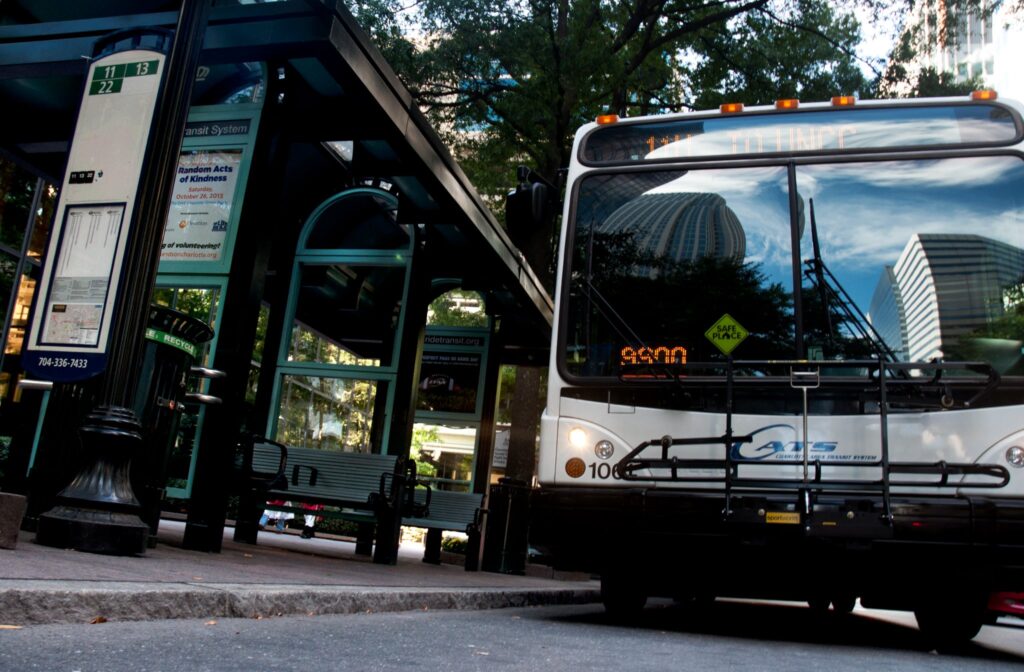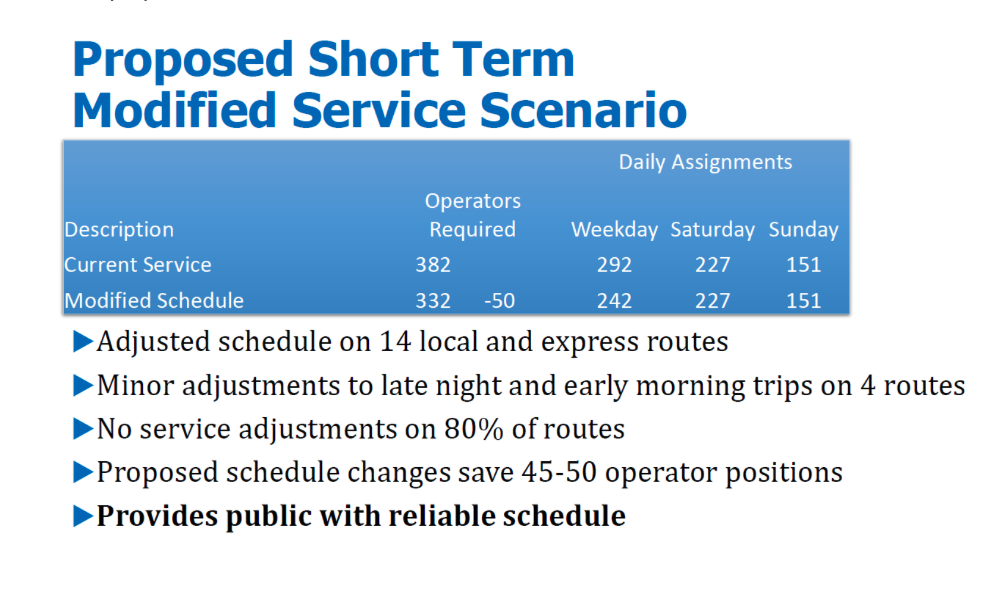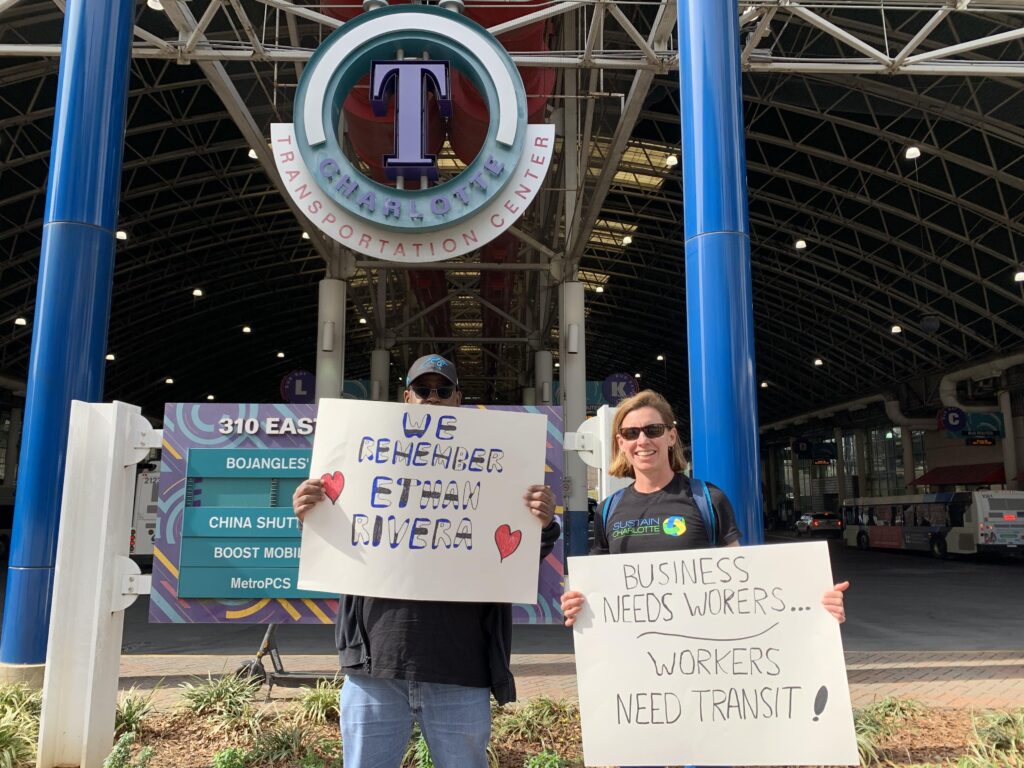Charlotte bus routes have been hit with delays. Here’s why and what’s happening to fix it
Bus service needs to be fast, frequent, reliable, and walkable to fully meet the mobility needs of riders.
Unfortunately, Charlotte Area Transit System bus service has recently been anything but frequent and reliable for riders. As the Charlotte City Council’s Transportation and Planning Committee members learned this week, CATS has been short an average of 23 bus operators per day since May 1, with a daily deficit regularly approaching 40-50 operators.

A Charlotte Area Transit System bus is seen in uptown in an undated photo. (CATS)
The result has been a slew of frustrations for riders who now face numerous uncertainties: Do I need to leave the house 30 minutes earlier than usual to make it to my medical appointment? Will the scheduled bus shown on the app actually arrive, or did its driver not show up today? Will I get to work on time, or be able to pick my child up from daycare on time?
Charlotte’s not the only place with transit operator shortages
Almost every transit agency across the U.S. is facing operator shortages. Our program team joins national transit advocacy meetings every week, and this issue is at the forefront for the whole country.
A very competitive job market is luring transit drivers and mechanics alike to instead work for delivery companies. Increasing desire for flexible work schedules as family care needs escalated for many during the pandemic means that a fixed 5-day-a-week schedule isn’t as appealing as it once was. Drivers have now faced two and a half years of possible daily exposure to COVID-19 and verbally reminding riders to wear masks. In short, it’s quite a different job to be a bus operator now than it was in January 2020.
CATS CEO John Lewis explained that the agency chose not to cut back the frequency of service when many other agencies across the country were slashing trips due to operator shortages. Even as Portland, Atlanta, and Austin cut back service in late 2021 and early 2022, CATS aimed to not reduce the frequency of bus service — aside from cutting some express routes that were also served by slower local routes.
We applauded CATS’ commitment to prioritizing high-quality service earlier in the pandemic as the agency used COVID-relief funds to avoid service cuts. But now the operator shortage has escalated to an untenable situation for riders.
CATS has a proposed short-term fix
As explained in Ely Portillo’s article for the UNC Charlotte Urban Institute, CATS proposes temporarily reducing the frequency of service on approximately 20% of its lower ridership bus routes during times of day when there are fewest riders — typically late at night and the middle of the day. This will free up the 45-50 operators needed each day to cover the shortage and avoid any missed trips. Lewis told the Transportation and Planning Committee that this proposed cut in service “is a short-term solution.”

CATS’ proposed plan will reduce frequency on some routes, but provide more reliability. (CATS)
Our take: we both support Charlotte transit drivers and hope service improves quickly
We hate to see service being cut when it already wasn’t frequent enough to fully meet riders’ needs before the pandemic. But we agree that the current situation is creating a situation where bus riders have very little predictability in their daily travel schedules, so it’s worth temporarily sacrificing some frequency in exchange for improved reliability across the system.
Lewis cited operator pay, scheduling, and “pandemic fatigue” as the three top reasons that CATS is having trouble retaining and hiring operators. CATS operators are not actually employees of CATS or the city. Instead, they’re hired by a third party that provides bus operations (driving and maintenance) service to CATS on a contract basis. The good news is that the unionized drivers are currently in the midst of negotiating a new contract, which happens every three years.

We thanked bus drivers on Transit Driver Appreciation Day in March.
Sustain Charlotte deeply values the committed work of our bus operators. A number of our staff members are daily bus riders and we see that the drivers are facing new challenges in this post-pandemic world. Their job is not easy as they strive to provide safe and reliable service to riders during a pandemic. We support the drivers as they advocate for competitive pay, schedules that allow for work-life balance, and safe working conditions.
CATS’ proposed plan should be only a short-term strategy as the agency determines how to provide operators with the resources and pay they need to make the job more attractive. Even though lower ridership routes are being cut back, there will be significant impacts on the riders that use those routes, such as a rider of Route 1 who works second shift in Charlotte and lives in Mount Holly. CATS’ governing board will review the proposed changes at its July 27 meeting.
What’s needed to improve Charlotte’s transit service in the long term?
Let’s look out a little further in time to the point when CATS is able to hire and retain enough bus operators to reliably run every planned bus trip as scheduled. This will just get us back to where the reliability level of service was prior to the pandemic.
The CATS Envision My Ride Bus Priority Study aims to ultimately improve all non-express bus routes to provide service every 15 minutes all day, every day. Without an additional local funding source, progress will be incremental at best, with CATS only able to invest in a few routes per year.
As a rapidly growing city with changing mobility needs of residents, we can’t afford to make progress that slowly.
Sustain Charlotte is working with our partner organizations in our Charlotte Regional Transportation Coalition to advocate for an equitable long-term funding source to build the Transformational Mobility Network, including a fast, frequent, reliable, and walkable CATS bus network.
Thanks for reading!
As a nonprofit, community support is essential for us to keep doing what we do — including providing free articles like this. If you found this article helpful, please consider supporting Sustain Charlotte.
Want to stay in the loop? Subscribe to our weekly newsletter and follow us on Instagram, Facebook, and Twitter.
